This Post May Contain Affiliate Links. Please Read Our Disclosure Policy.
This breakfast casserole is simply the BEST! Cheesy, savory, filling, AND gluten free, it’s my favorite breakfast casserole ever. Packed with flavor from ground sausage, cheese, green onions, and shredded hash brown potatoes, it’s easy to make but so delicious. Great for a crowd or meal prep for the family, you can also make it ahead and keep it in the fridge overnight for brunch or Christmas morning.

What Makes This Recipe So Good
- Hashbrowns. Sausage. Eggs. Cheddar. Basically all the breakfast staples come together in one easy-to-make breakfast casserole that’s gluten free, feeds a group, and can totally be made in advance to save time on busy holiday (or regular day) mornings.
- It’s SO delicious. Like, it’s so simple that it shouldn’t be as delicious as it is, and YET. I could eat this literally every day, it’s that good. My whole family loves it, too, which just makes life SO much easier. And I don’t know about you, but any recipe that makes life a little easier is a totally must-make in my book.
- You can make this recipe as simple or as involved as you like. Work in some sautéed mushrooms or fajita-style veggies. Use crumbled bacon, diced ham, or maple sausage. Switch up the cheese, change up the seasonings, throw on your favorite toppings (salsa would be delish). Or just keep things classic like we did this time around.
Chef’s Tips
- Ok, meal preppers and make-ahead-ers (?). You’ve got two options for prepping this one in advance. Option 1 – assemble the gluten free breakfast casserole as instructed the night before, cover it with plastic wrap, and refrigerate it overnight. When you’re ready to bake it in the morning, let it come to room temperature first, then bake as instructed. Option 2 – make everything exactly as instructed, let the fully baked casserole cool, refrigerate it in an airtight container, and reheat individual servings throughout the week. Both methods work really well, and both taste really good.
- After your frozen hashbrowns thaw, be sure to drain any liquid well. You don’t want a breakfast casserole that’s soggy on the bottom.
- Double check your individual ingredients for added salt (or salt substitutes). If your hashbrowns or sausage are particularly salty, you’ll want to dial back the amount you add yourself.
- Making this for someone who’s gluten free, even though you yourself eat gluten on the regular? You’ll want to be extra sure that the sausage and hashbrowns you use are actually gluten free. Some brands use additives and other secretly gluten-containing ingredients, and some are just a risk of cross-contamination. To be really safe, look for “certified gluten free” labels on the packaging.
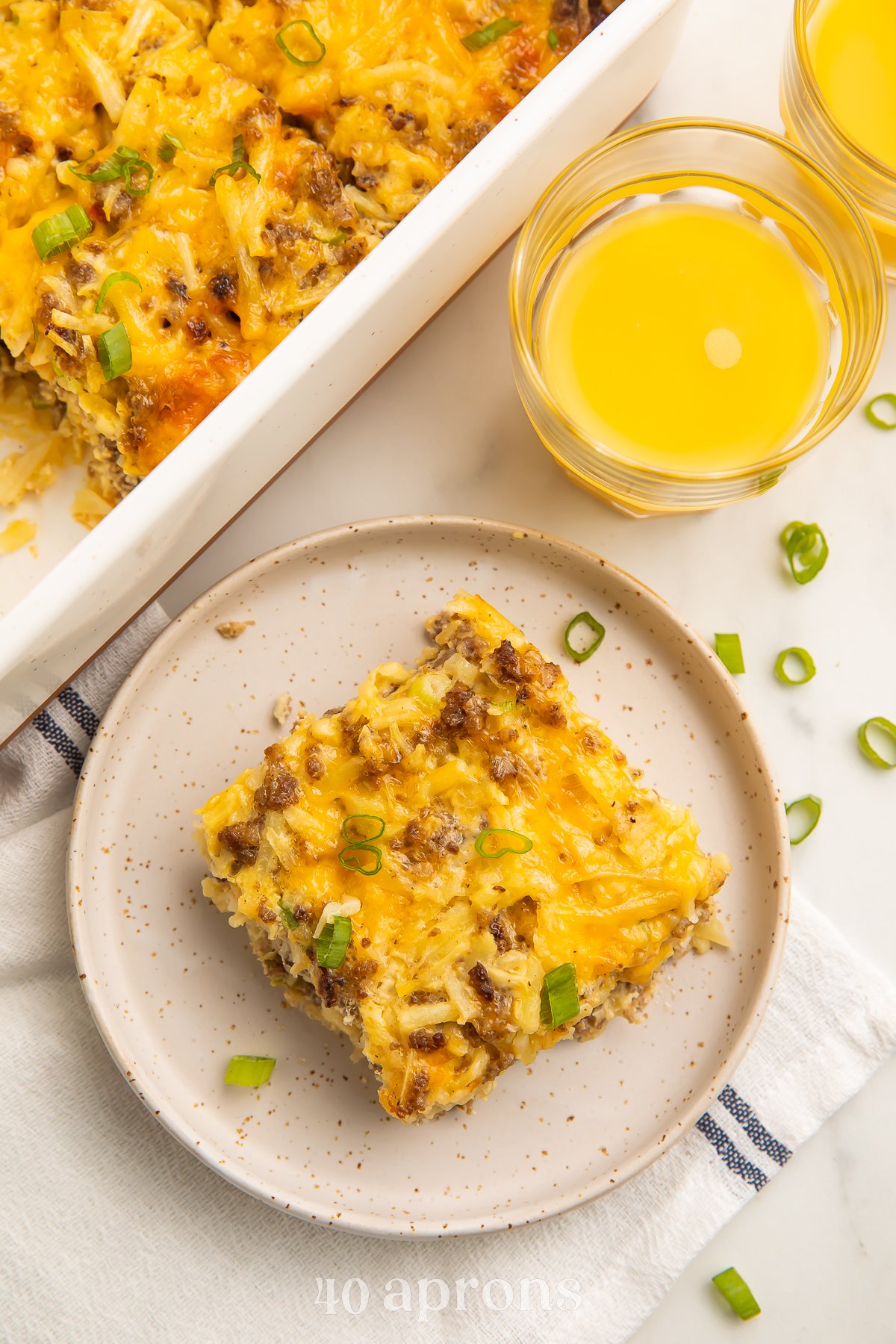
Other Incredible Casseroles We Love
- Cheesy Chicken Broccoli Rice Casserole
- Crockpot Breakfast Casserole
- Chicken Fajita Casserole
- Chicken Pot Pie Casserole
- Easy, Cheesy Mexican Rice Casserole
- Ruth’s Chris Sweet Potato Casserole
- Copycat Cracker Barrel Hashbrown Casserole
- Tonga Toast French Toast Casserole
- Butternut Squash Casserole
- Breakfast Taco Casserole
- Sausage & Egg Keto Breakfast Casserole
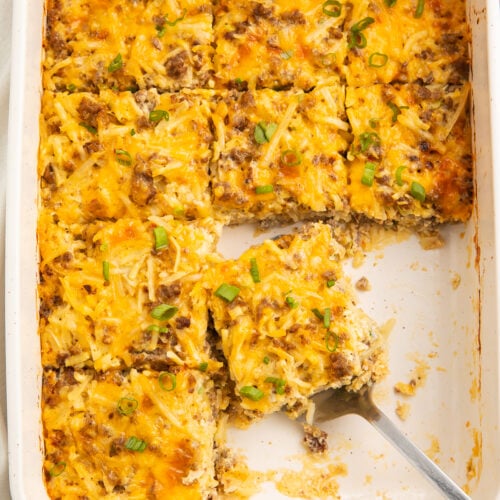
Gluten Free Breakfast Casserole
Equipment
- 9×13 baking dish
- Cooking spray
- Large skillet
- stovetop
- Spatula
- large mixing bowl
- whisk
Ingredients
- 2 pounds ground pork sausage mild, hot, or a combination
- 1 30-ounce package frozen hash browns thawed, drained
- 1 teaspoon salt divided
- 4 green onions chopped, divided
- 2 cups freshly shredded cheddar cheese divided
- ½ teaspoon freshly cracked black pepper
- 8 large eggs
- 2 cups milk of choice see Notes
Instructions
- Preheat oven to 350° Fahrenheit. Lightly grease 9×13 baking dish, then set dish aside.
- Heat large skillet over medium-high heat. When skillet is hot, add 2 pounds ground pork sausage. Cook until sausage is crumbled and no longer pink.
- Drain liquid from skillet. Add hash browns, ½ teaspoon salt, 2 chopped green onions, and 1 cup shredded cheddar to skillet. Stir until ingredients are thoroughly combined, then transfer mixture to greased baking dish. Set skillet aside.
- Crack eggs directly into large mixing bowl. Add 2 cups milk, ½ teaspoon freshly cracked black pepper, and remaining ½ teaspoon salt. Whisk ingredients together until mixture is pale yellow and no longer streaky.
- Pour egg mixture into baking dish, covering sausage mixture evenly. Spread remaining 1 cup shredded cheddar evenly over top of egg mixture.
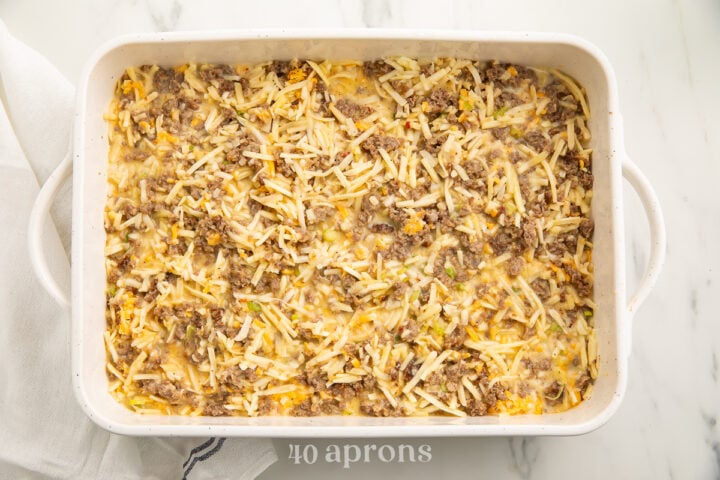
- Place baking dish in preheated oven. Bake 35 to 40 minutes, or until eggs are set and cheese is melted.
- Remove baking dish from oven. Let casserole sit 5 minutes. After 5 minutes, sprinkle remaining chopped onions over top of casserole to garnish, then slice casserole into 12 squares and serve warm with desired sides.
- Sausage: You can make your own sausage at home if you prefer. Use my recipe for Whole30 Breakfast Sausage – it’s also gluten free, paleo, and sugar free.
- Salt: If your ingredients contain any added salt or salt substitutes, you’ll want to use less than the amount of added salt called for in this recipe.
- Make it Gluten Free: If you’re new to GF cooking, double check that your ingredients are all actually gluten free – especially the sausage and the hashbrowns. Look for “gluten free” or “certified gluten free” labels if you’re unsure or concerned about potential cross-contamination.
- Make it Dairy Free: Use a non-dairy milk and a plant-based cheese.
- Make it Vegetarian: Omit the sausage or use a plant-based sausage substitute.
Approximate Information for One Serving
Nutrition Disclaimers
Number of total servings shown is approximate. Actual number of servings will depend on your preferred portion sizes.
Nutritional values shown are general guidelines and reflect information for 1 serving using the ingredients listed, not including any optional ingredients. Actual macros may vary slightly depending on specific brands and types of ingredients used.
To determine the weight of one serving, prepare the recipe as instructed. Weigh the finished recipe, then divide the weight of the finished recipe (not including the weight of the container the food is in) by the desired number of servings. Result will be the weight of one serving.
Did You Make This Recipe?
Tag @40aprons on Instagram and be sure to leave a review on the blog post!
Never Miss A Meal!
New Recipes Straight To Your Inbox
A curated selection of our most recent recipes, delivered straight to your inbox once a week.
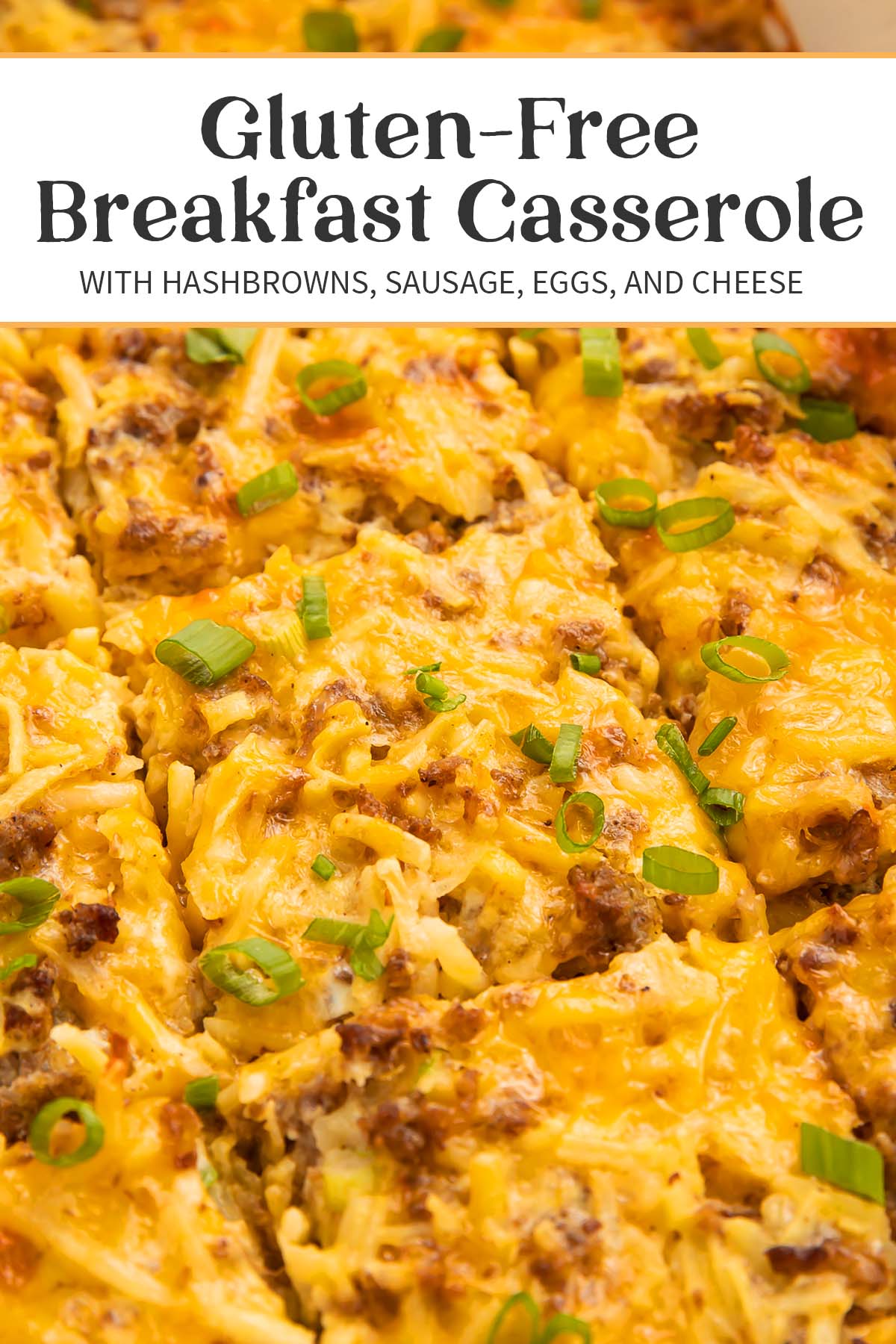
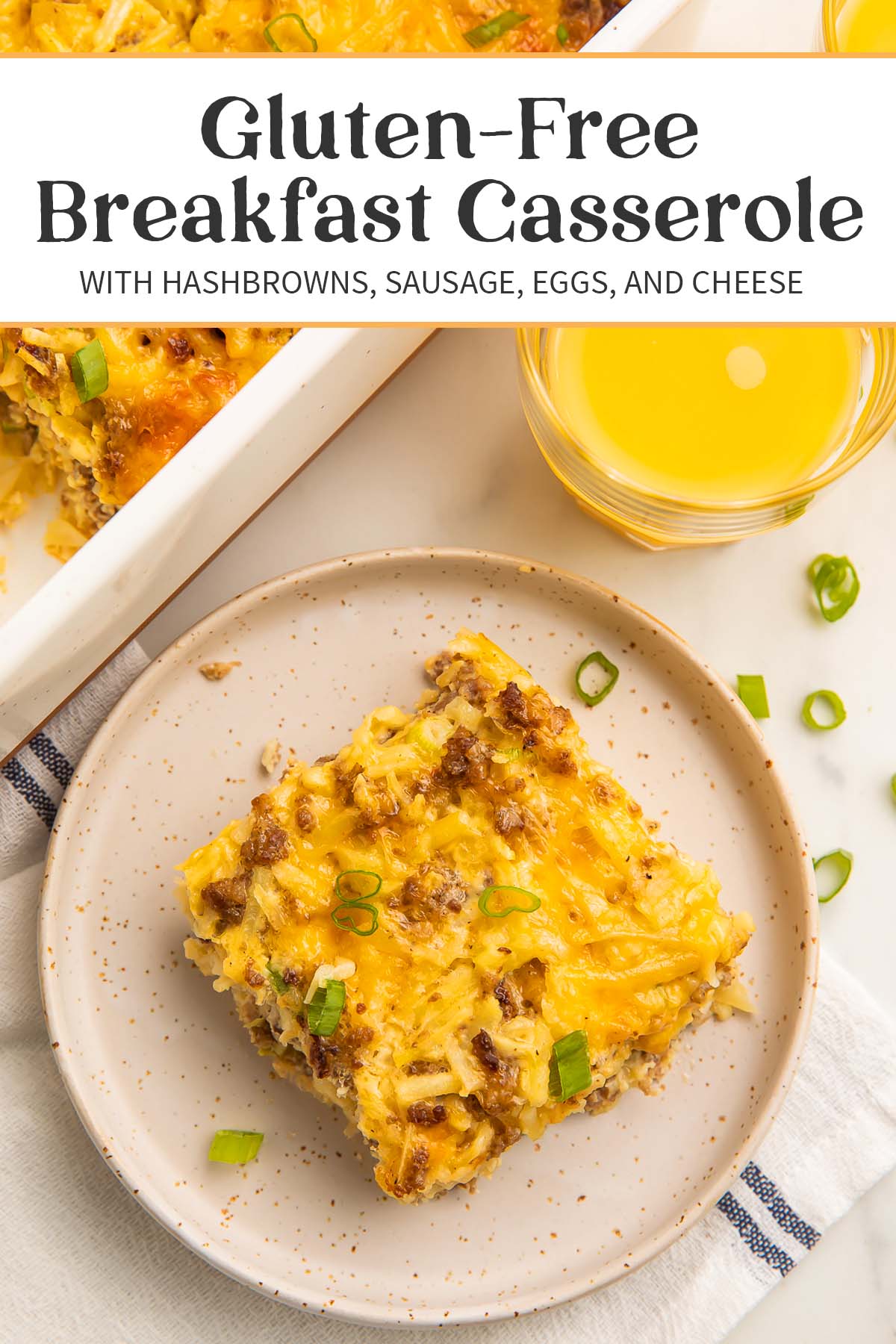
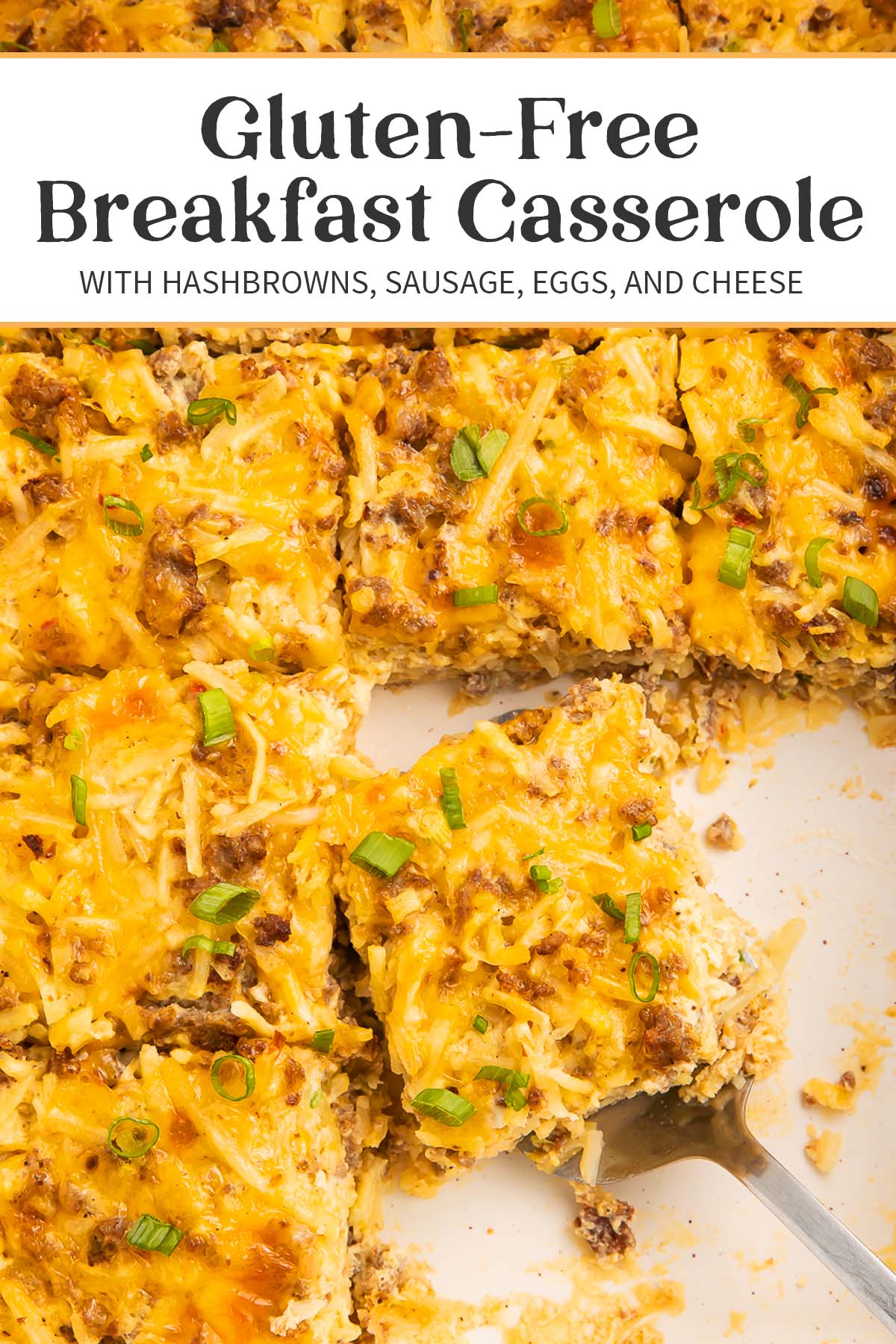

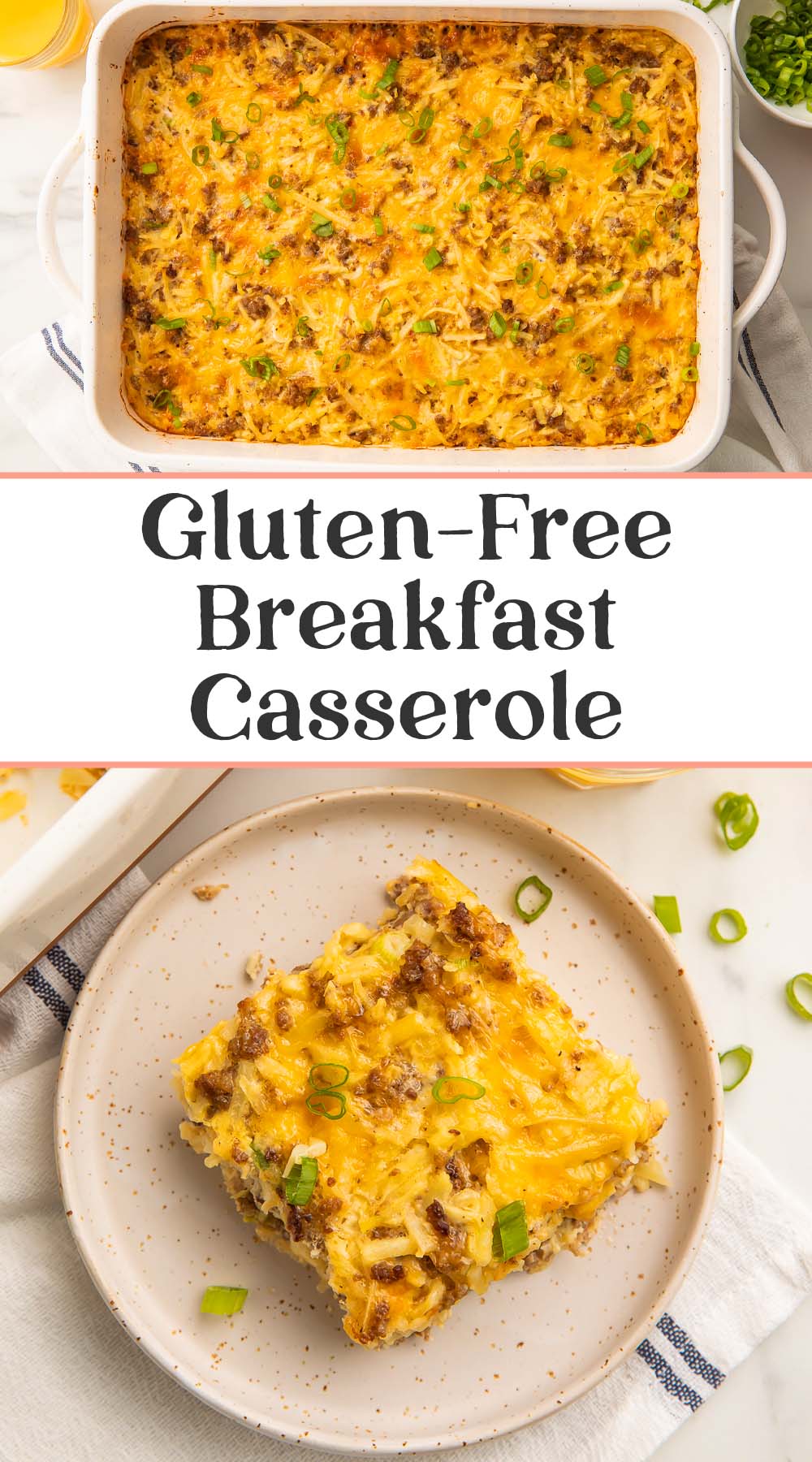

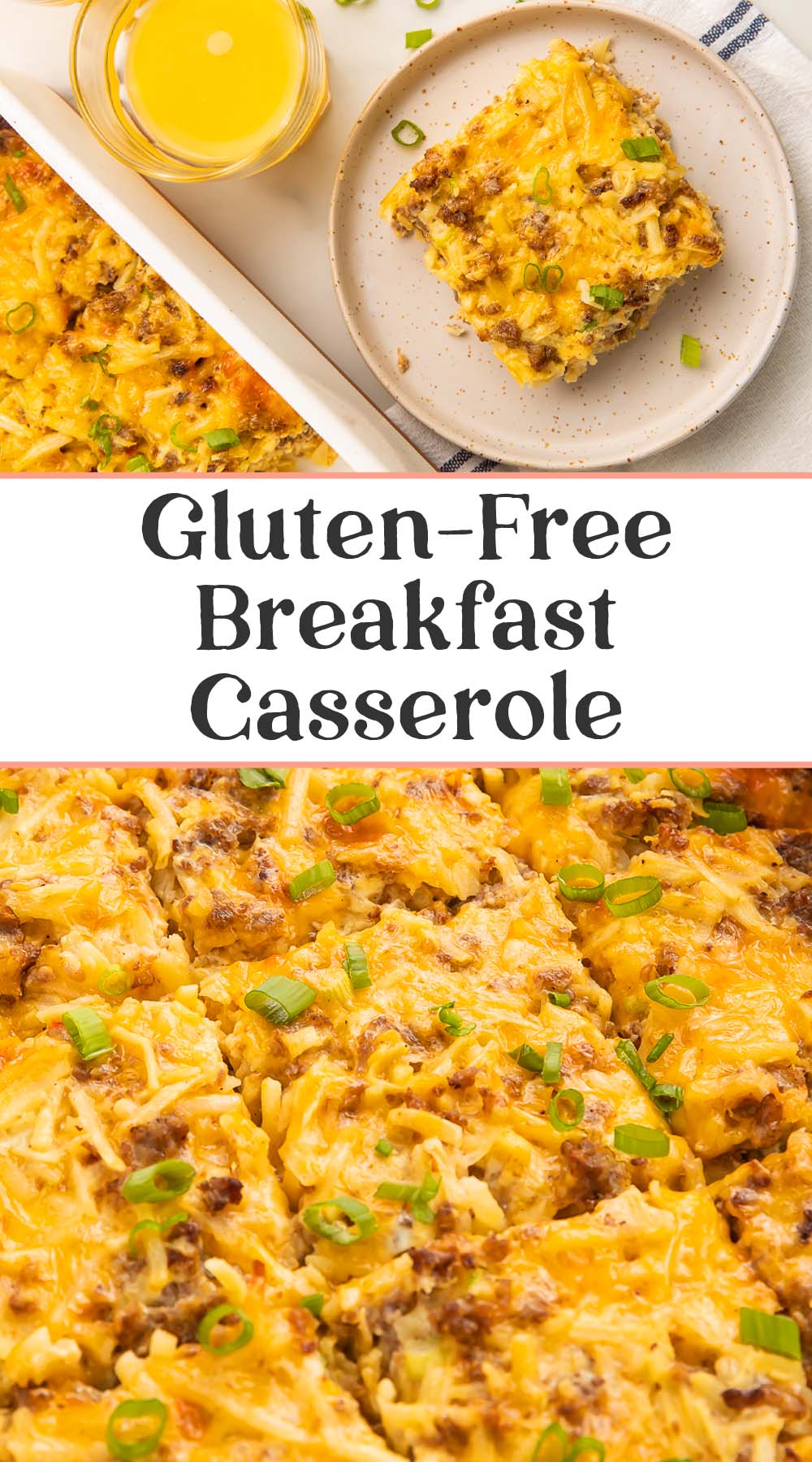
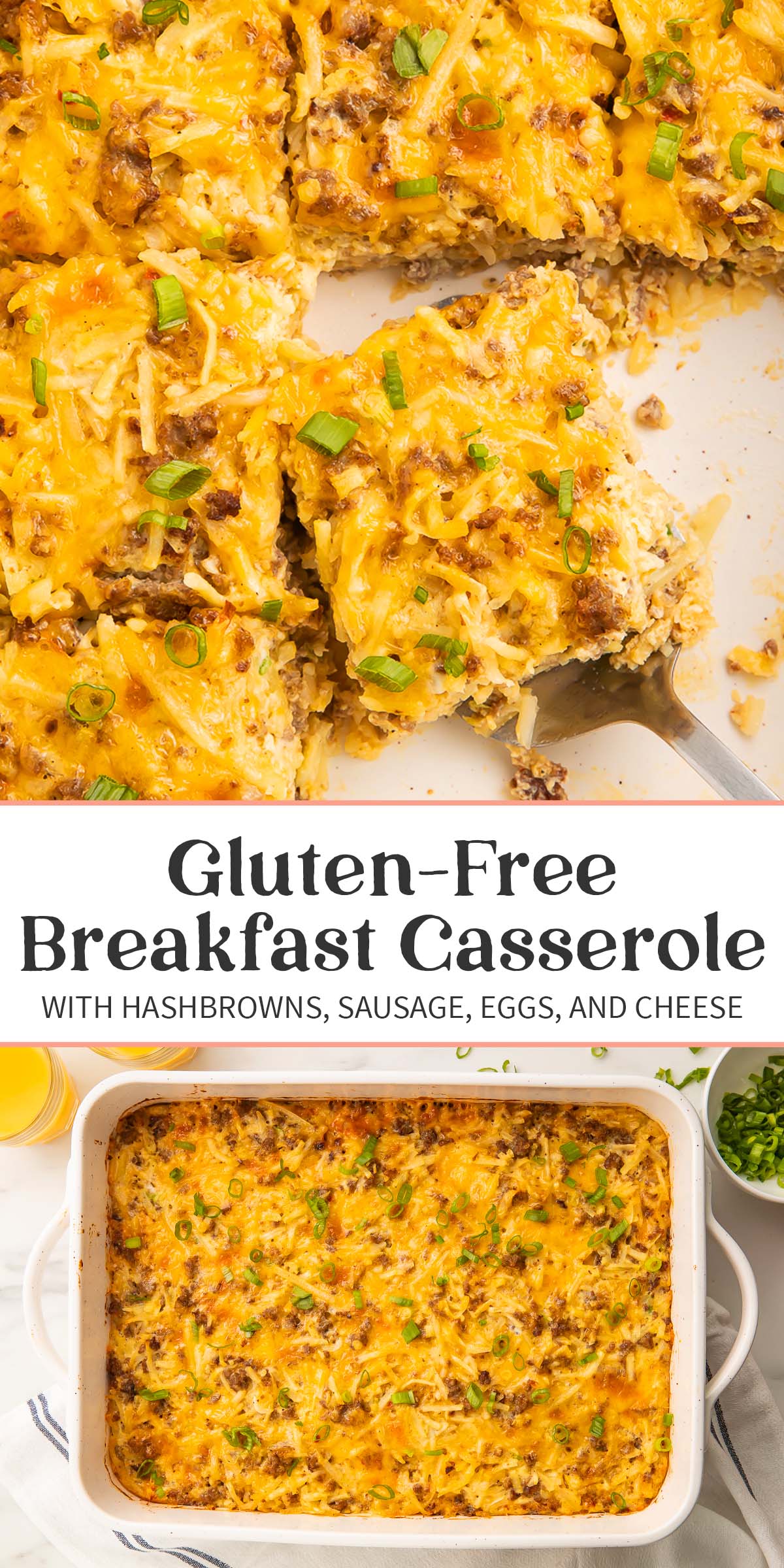

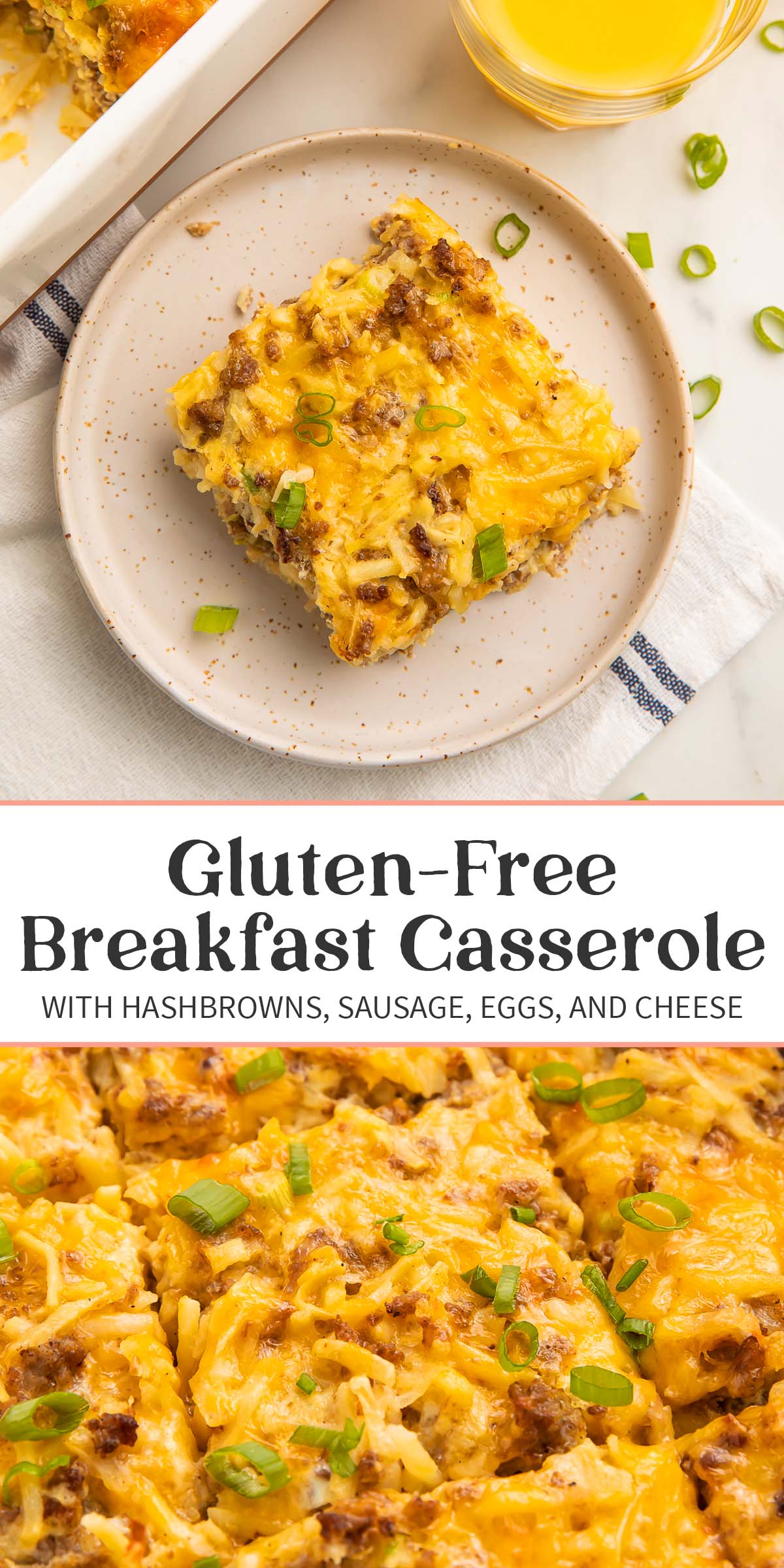


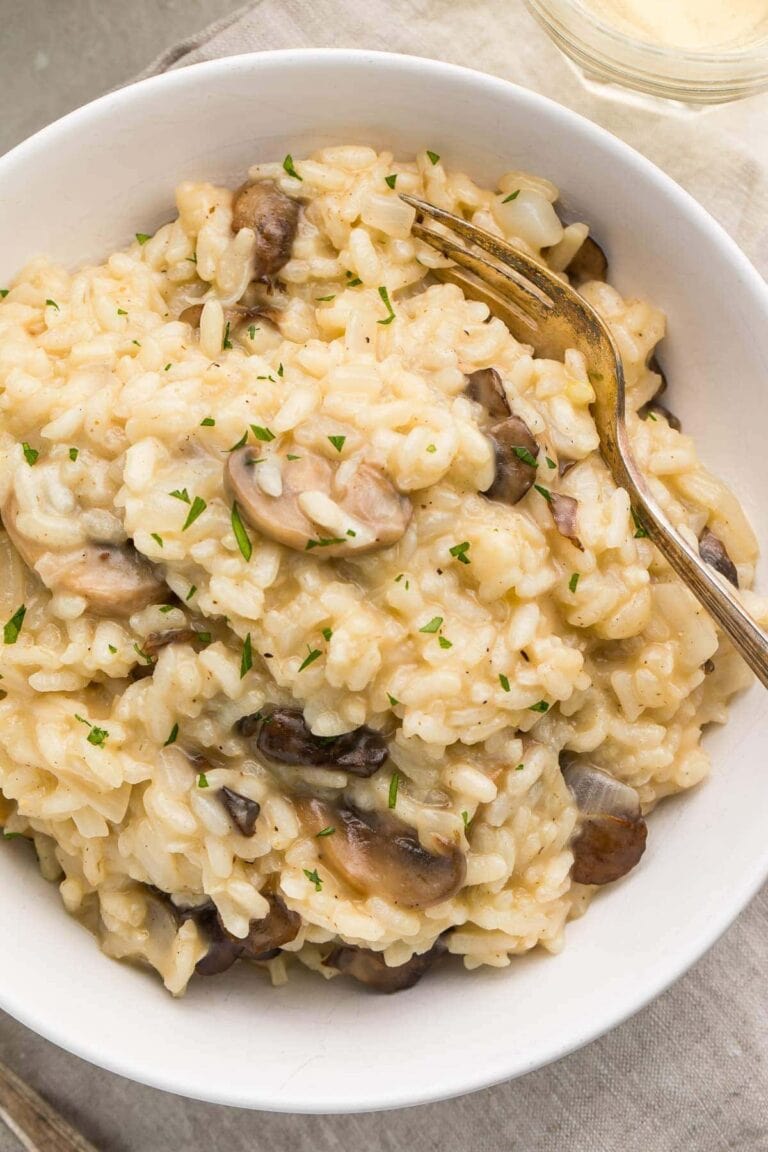

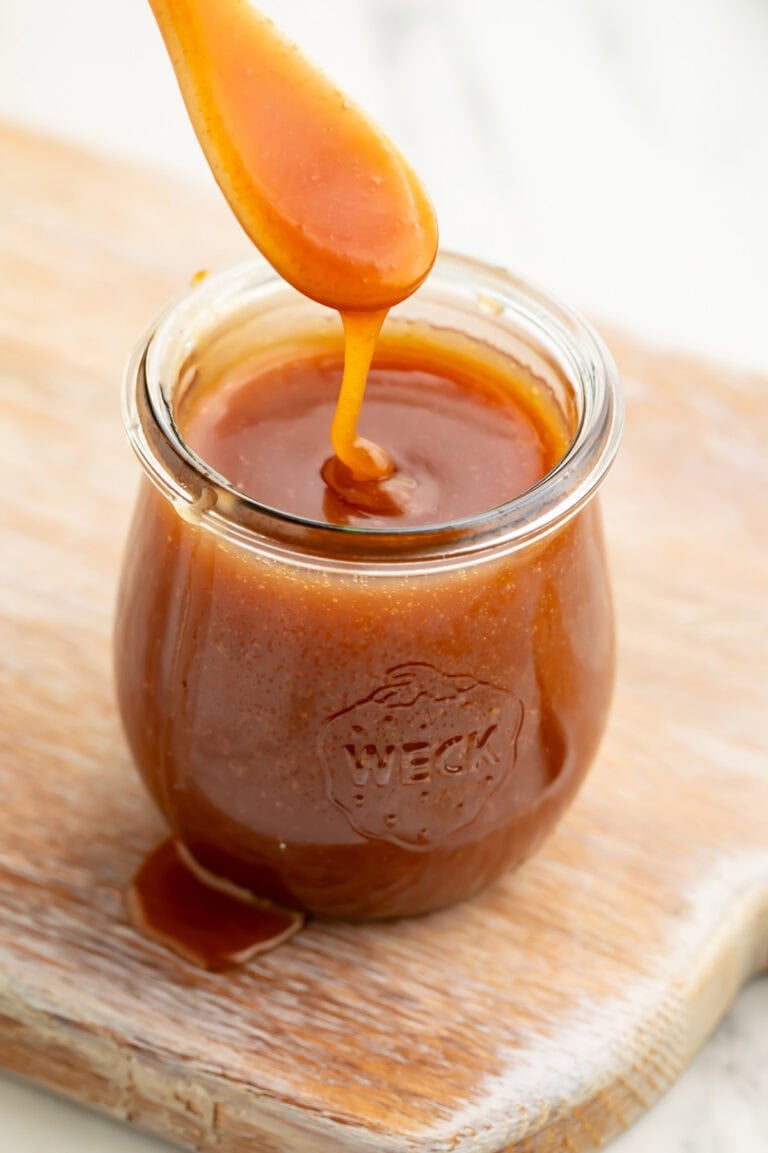
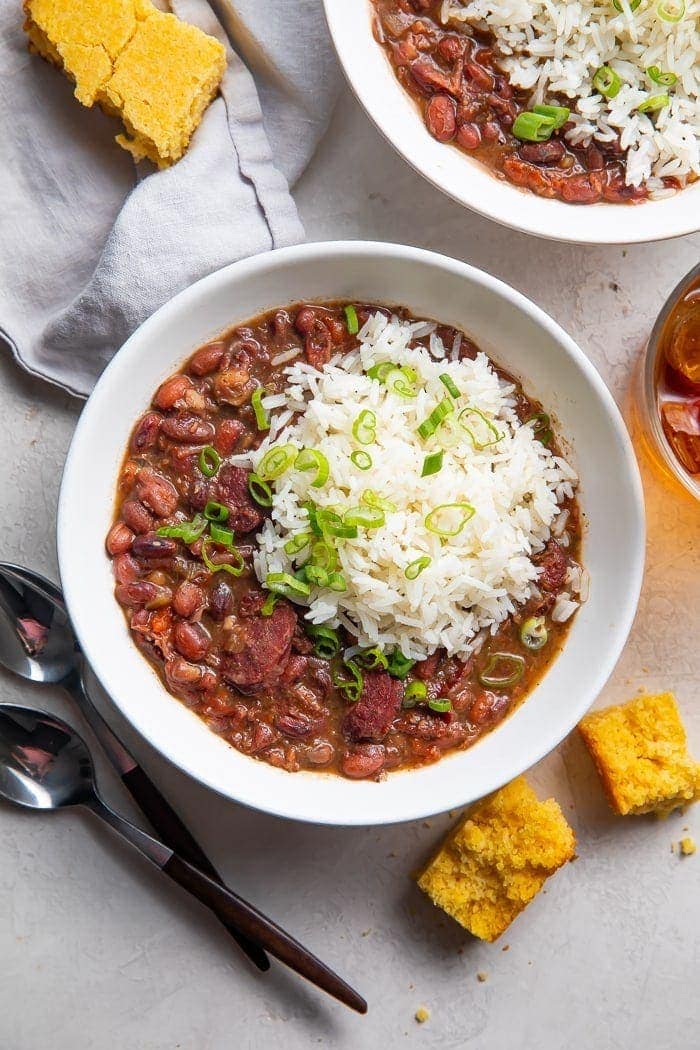










Wow this is so good! I’m usually not a fan of breakfast casseroles because they are usually mushy but this was wonderful!
We’re so glad you enjoyed it, Sara! 😊
This was delicious but you have to make sure the hash browns are totally thawed before draining the liquid. I didn’t let the hash browns thaw enough and thus my casserole was runny and at first i thought it wasn’t cooked enough and added on several minutes to bake time. It still was runny and i realized it was cooked so we went ahead and ate it. It was really good, despite having to use a slotted spoon to serve.
So glad you still enjoyed it! Thanks for sharing the tips, Peggy!
When do you put in the 1/2 tsp. of pepper?
Oops, sorry about that! It should go in with the eggs.
Can you use leftover baked potatoes and shred them and use that rather than frozen? My husband went to the store and THEY HAD NO FROZEN HASH BROWNS!!! LOL!
You could probably do that with uncooked potatoes, but I’m not sure how well the baked potatoes would shred. They’d also be cooked twice (once when they were baked and then again here) so there’s a chance they’d be overdone and unenjoyable.
do you use shredded frozen hash browns?
Yes!
How long does it take to thaw out the frozen hash browns?
That would depend on a few factors… Did you just get them from the store, or have they been in your freezer for a while? If you just got home with them, they’ve got a headstart from being in your shopping cart and your car. Are you defrosting them in the fridge, or at room temperature? If room temperature, how warm is the room?
If you move them over from the freezer to the fridge, overnight should be plenty of time.